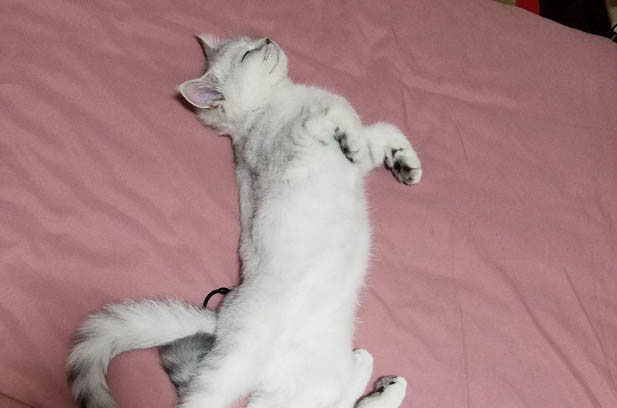In the world of cat breeding and ownership, the idea of a “purebred” cat is often a topic of much discussion and sometimes confusion. The concept of “pure” is not as absolute as one might think. It is highly relative, especially when considering the price factor.
For instance, if someone purchases a cat for 1000 yuan and it meets the basic breed characteristics to a reasonable extent for that price range, it can be considered “pure” in the context of its cost. However, if the same cat were sold for 6000 yuan, expectations would be much higher. At this price point, the cat might not be considered “pure” enough because the buyer would anticipate a higher standard of breed purity, perhaps with more refined features and a more impeccable lineage. This shows that the perception of purity is closely tied to the amount of money one spends. Breeders often price their cats based on factors such as bloodline purity, conformation to breed standards, and the overall quality of the litter. High – quality, truly purebred cats with well – documented lineages and excellent physical characteristics usually command a much higher price.

Another aspect that causes confusion among cat enthusiasts is the issue of coat patterns. Many people wrongly assume that any visible stripes or patterns on these cats are a sign of impurity. In fact, the tabby pattern is a legitimate and recognized part of these breeds. It adds a unique charm to the cats. These tabby – patterned golden or silver shaded British Shorthairs have their own beauty and are just as much a part of the breed as those with more solid – colored coats. People interested in this unique variation can easily search online to learn more about its characteristics, history, and how it fits into the breed standard. It’s important to dispel the myth that having a pattern automatically makes a cat of these breeds less valuable or less pure.
Once a cat has been brought into a home, regardless of its perceived purity, it becomes a precious member of the family. The focus should shift from worrying about whether the cat is “pure” or not to providing it with the best possible care. A cat, whether purebred or not, needs love, proper nutrition, regular veterinary check – ups, and a safe and comfortable living environment. Spending time worrying about the purity of a cat that has already become a part of one’s life is a fruitless endeavor. Each cat has its own distinct personality, and this individuality is what truly makes them special. A cat that might not meet the strictest definition of a purebred can still bring immeasurable joy and companionship. It can become a source of comfort, entertainment, and unconditional love.
In conclusion, the concept of “purebred” in cats is a complex and relative one. We should look beyond the simple label of “pure” or “impure” and appreciate the beauty and value of each cat for what it is. Whether it’s a budget – friendly cat that might not be the epitome of breed purity or an expensive, show – quality purebred, every feline companion deserves our love and care. By understanding the nuances of breed characteristics and letting go of the obsession with purity, we can fully embrace the wonderful world of cat ownership and the unique bond we share with our furry friends.
Leave a Reply